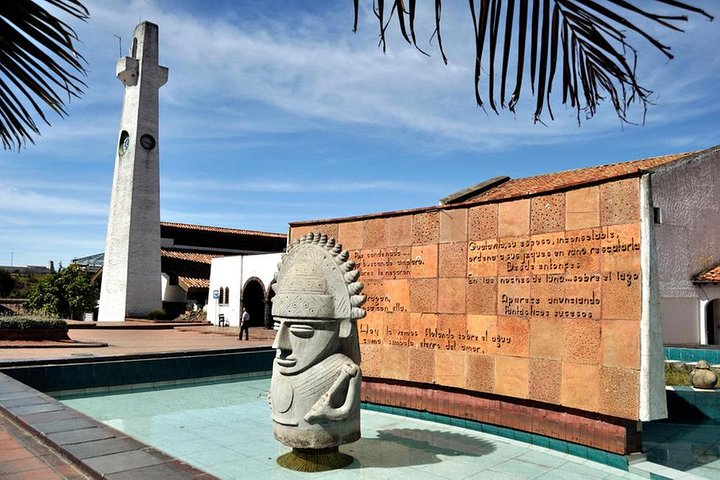Exploring the Mystical Wonders of Zipaquirá and Guatavita
Drawn by the allure of Muisca traditions and the breathtaking landscapes of the Colombian Andes, I embarked on a journey to explore the Salt Cathedral and the sacred Laguna de Guatavita. This adventure promised a blend of history, culture, and nature, and it did not disappoint.
A Journey Through Time: The Salt Cathedral
As I embarked on my journey to the heart of the Colombian Andes, I was filled with anticipation. The Salt Cathedral of Zipaquirá, a marvel of engineering and spirituality, awaited me. Nestled within a mountain of salt, this underground cathedral is a testament to human ingenuity and devotion. Walking through its deep tunnels, I was enveloped by a sense of awe and reverence. The air was cool and slightly salty, a reminder of the natural wonder surrounding me.
The cathedral’s grandeur is matched only by its profound message. Each chamber tells a story, from the Stations of the Cross to the grand nave, where light filters through salt crystals, casting ethereal patterns on the walls. My guide, a knowledgeable local, shared tales of the Muisca people, whose history is intertwined with this land. Their reverence for the sun and the sacredness of salt were palpable in every corner of this subterranean sanctuary.
As I explored, I couldn’t help but reflect on the delicate balance between nature and human creation. The cathedral, carved from the earth, stands as a symbol of harmony and respect for the natural world. It was a reminder of the importance of preserving such wonders for future generations, a cause close to my heart as an environmental activist.
The Sacred Waters of Guatavita
Leaving the cathedral behind, I journeyed to the Laguna de Guatavita, a place steeped in legend and mystery. The ascent to the sacred lake was a trek through lush landscapes, each step bringing me closer to the heart of Muisca traditions. The path, cobbled and winding, led me through a tapestry of vibrant flora, a testament to the region’s rich biodiversity.
Reaching the lake, I was struck by its emerald waters, shimmering under the Andean sun. The energy here was palpable, a sacred aura that has drawn people for centuries. The Muisca believed the sun resided in these depths, and their offerings of gold were a testament to their devotion. Standing at the water’s edge, I felt a connection to the past, a reminder of the enduring bond between humanity and nature.
The stories of shamans and ancient rituals echoed in the breeze, a whisper of the lake’s storied past. As I stood there, I was reminded of the importance of preserving these cultural and natural treasures. The lake, a symbol of the Muisca’s spiritual heritage, is a testament to the power of nature and the need to protect it.
Embracing Muisca Traditions
My journey through Zipaquirá and Guatavita was more than just a tour; it was an immersion into the rich tapestry of Muisca culture. From the engineering marvel of the Salt Cathedral to the sacred waters of Guatavita, I was captivated by the stories and traditions that have shaped this region.
The experience was a reminder of the interconnectedness of all things, a theme that resonates deeply with my work in conservation. The Muisca’s reverence for nature and their understanding of its sacredness is a lesson for us all. As I returned to my life as a biologist and environmental advocate, I carried with me the stories of this land, a renewed commitment to preserving its beauty and heritage.
For those seeking a journey that combines history, culture, and nature, this adventure is a must. It offers a glimpse into the soul of the Colombian Andes, a place where the past and present coexist in harmony. As I reflect on my time in this enchanting region, I am filled with gratitude for the opportunity to witness its wonders and share its stories with you.












































